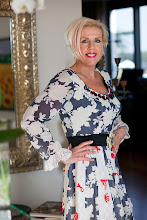
Earlier this year, I attended a talk by Abigail Ingram on the subject of ‘structural colours in nature’. She asked important questions like ‘why are some animals and plants brighter than others?’ She also mentioned a few naturally colourful species in passing: the dragonfly, the lavender beetle, the chalk blue butterfly, the shoal fish and the peacock (or at least its feathers).
Apparently, it was Newton (in the 1700s), who first linked the diffraction of light with the structure of peacock feathers. However, it wasn’t until the early 1970s that physicists became fully aware of structural colour.
It’s interesting how in some insects, like butterflies, the dorsal side of the wings is pure colour, but the other side is camouflaged. The males are often very brightly coloured, apparently to ward off others from their territories and not, as Darwin thought, to attract females. Butterfly wings are actually like a multi-layer reflection of colour – of the sort you might see in an oil slick or an opal stone. The morpho butterfly, left, is the perfect example of this – in fact morpho butterfly structures are applied to products such as makeup and there's even a ‘morpho tex fabric’.
As Kate Fletcher explains in her book, Sustainable Fashion and Textiles: “Developed by Teijin, Japan, and inspired by the iridescent morpho butterfly of South America, Morphotex achieves its colour by causing light to diffract and interfere with the fibre in ways that can amplify certain wavelengths. This creates brilliant colours to the viewer through the use of physical structure rather than with pigment or dye...
In effect, the surface layers play with light and reproduce a coloured fabric without the energy and resource impacts associated with dyeing and printing. The Morphotex fibre has a multilayer stack structure made up of 61 layers of polyester and nylon, each with different refractive indexes. By controlling the thickness of the layers, it shows variations in the four primary colours: red, blue, green and yellow, according to the angle and intensity of light"
 By using nano-scale structures, it's possible to create new paints, fabrics and cosmetics – what’s more they’re free of toxins and require less energy to manufacture. Modern technology also draws upon this phenomenon in nature to create holograms – useful in anti-counterfeiting measures for credit cards. Using a similar technique, brightly coloured sea creatures, called Aphrodite, right, can also be used for optical purposes. Biomimicry is probably the ultimate eco-friendly activity, since it's all about using nature and natural ecosystems as a model for innovative solutions to our own design requirements.
By using nano-scale structures, it's possible to create new paints, fabrics and cosmetics – what’s more they’re free of toxins and require less energy to manufacture. Modern technology also draws upon this phenomenon in nature to create holograms – useful in anti-counterfeiting measures for credit cards. Using a similar technique, brightly coloured sea creatures, called Aphrodite, right, can also be used for optical purposes. Biomimicry is probably the ultimate eco-friendly activity, since it's all about using nature and natural ecosystems as a model for innovative solutions to our own design requirements.
Hopefully, I've got all these facts right ... I'm not an expert on matters of science. In fact, generally speaking, men seem to be much more absorbed by the wonders of modern technology than women. However, biomimetrics is an area where modern technology, practical design and colour coincide - as in the case of these curiously colourful and stylish phone cases by Jack Spade, currently on sale at ShopCurious.

They're rather unique and could be perfect if you're looking for a useful, but unusual gift for any man (or woman) who owns a Blackberry or an iPhone - and who also likes to stand out from the crowd.
Are you?




















































